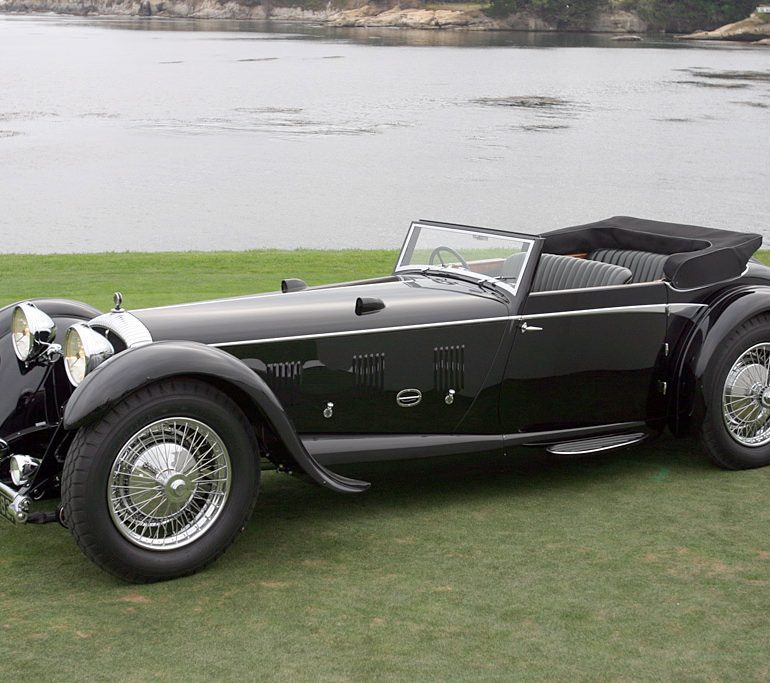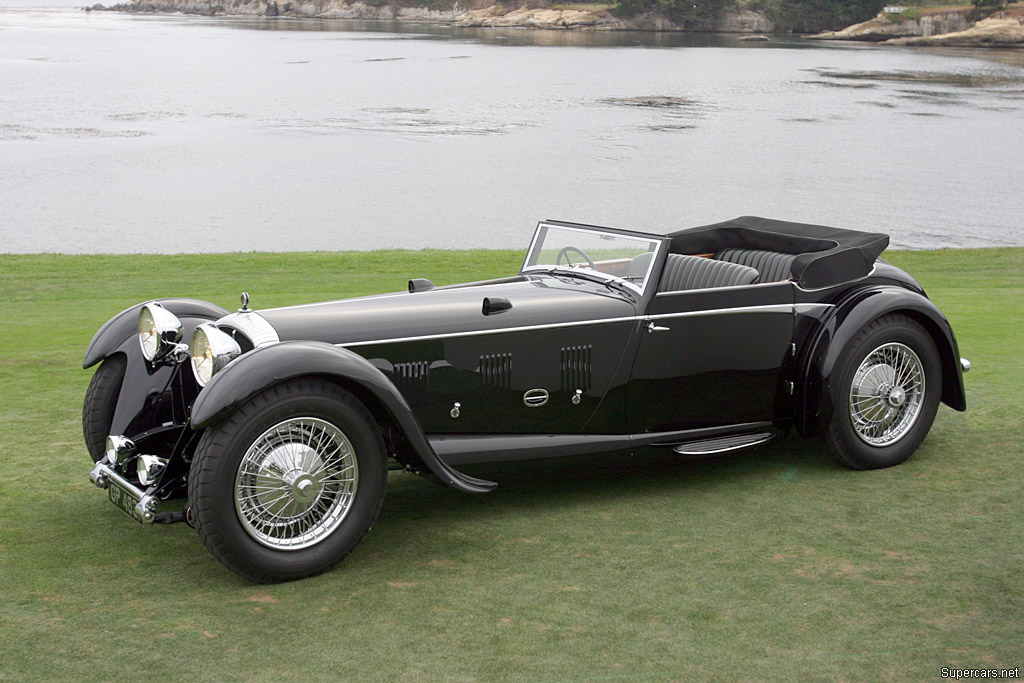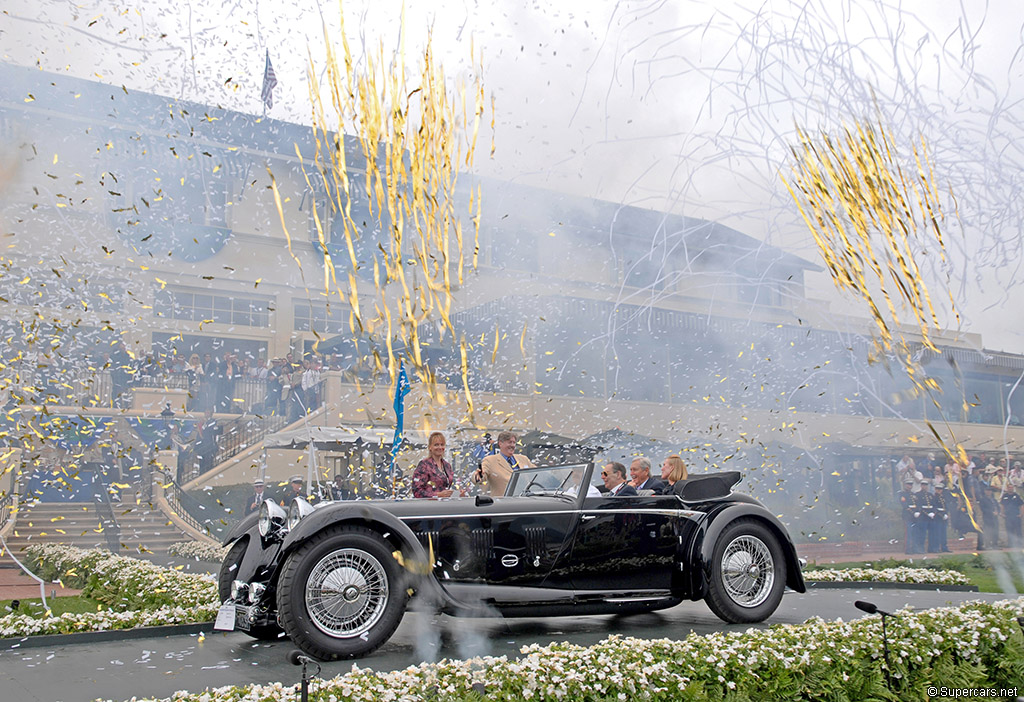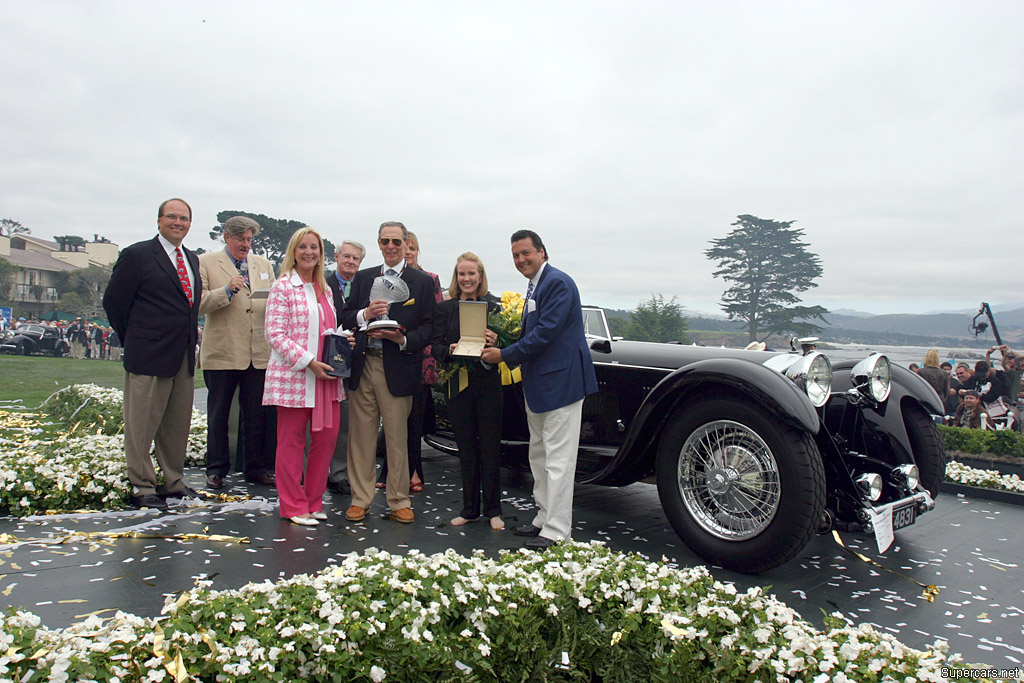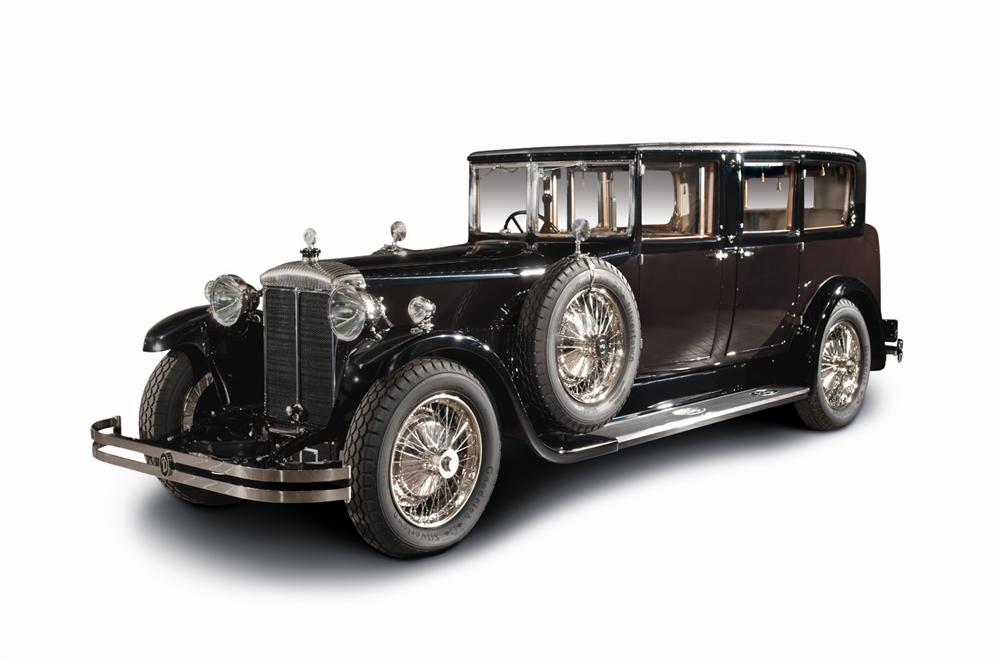Daimler Double-Six 50
Despite offering numerous models and having royal support, Daimler wanted to take an extra step after Rolls-Royce released their feature-rich Phantom in 1925. To stay competitive, Chief engineer Laurence Pomeroy decided to make the most of Daimler’s engineering and adopt sleeve valves in a new seven liter ‘Double Six’ V12. To do so, he mated two existing 6-cylinder, 25/85 hp engines to a common aluminum crankcase and refined the sleeves to reduce oil consumption.
Daimler is one of Britain’s oldest marques and has a history stretching back to the dawn of the automobile. Their very first cars were built under license from Gottlieb Daimler and quickly became official transportation for British royalty. Fit for kings, Daimlers were well appointed, and this reputation was enhanced in 1909 with the adoption of sleeve valves.
See full 1926 Daimler Double-Six 50 Gallery here
First patented by pioneer Charles Knight in 1908, sleeve valves were fairly new when Daimler took the bold move to include them a year later. They replaced standard poppet valves with moving sleeves that surrounded the piston to uncover intake and exhaust ports. This complex system worked without return springs, and enabled very high engine speeds with less stress than a conventional pushrod design. Daimler decided that the resulting quieter ride would offset the slight haze left by the exhaust as oil slipped between the sleeves.
Built in four banks of three cylinders, each block of the Double Six engine was independent with its own cooling, intake and exhaust system. It could be ordered in a variety of sizes and the option of regular poppet valves was available for more conservative customers. For others that were more ambitious, the seven liter Double Six 50 was the best, but only a few cars were ordered with it. Since these had one of the most complex motorcar engines ever made, they demanded equally as dramatic coachwork to surround it.
The Double Six is named after a taxable RAC rating of 50 hp, but the modern rating is somewhere between 130-150 bhp. Less then 10 cars were ordered with the Double Six 50 engine.
Chassis
30661-1931 Daimler Double Six 50 Corsica Drophead Coupé. Apart from its glorious body and impressive engine, this Daimler sits on one of the few chassis modified at Thompson & Taylor by Reed Railton to achieve an underslung chassis of the lowest possible height. So much so, the fenders which surround the oversize 23 inch wheels nearly reach above the hood line.
Before appearing at Pebble, this Daimler made many sleepless nights as negations for its purchase drew closer. For decades it was retained by a single family which clung onto their prize possession until the time was right. For a purchase price upwards up five million, RM Restorations secured the car and finished an immaculate restoration for its next owner Robert Lee.
Lee had the bankroll to support a restoration of the highest kind. Originally, chassis 30661 was displayed in chrome as the initial and sole low-slung type. One if its first caretakers, Captain Wilson, fitted the car with his own preselector-type gearbox and many subsequent Daimlers followed suit. It was then sold to R.W. Hutchings and suffered an accident on the A4 before being modified into its current configuration by Corsica. When sold to Lee, the roadster was real basket case and the engine alone took Roush Industries a year to refurbish.
In the end, RM’s worked was intricate enough to capture the coveted Best of Show award for Robert Lee. Whether or not his six million plus investment doubled up, is for the next auction to decide.
Sources & Further Reading
Boddy, William. Daimler Double-Sixes Profile 40. Profile Publications, 1966.
Montagu, Lord and David Burgess-Wise. Daimler Century. Haynes, 1995.
Owen, Richard. ‘Double-Top’, Octane 41, November 2006.
Story by Supercars.net
1926 Daimler Double-Six 50 Gallery
See full 1926 Daimler Double-Six 50 Gallery here
In Detail
| type | Series Production Car |
| production years | 1926 – 1930 |
| built at | England |
| production | 6 |
| price £/td> | £2800 |
| engine | 60º ‘Double-Six’ V12 |
| position | Front Longitudinal |
| aspiration | Natural |
| ignition | Twin Magenetos |
| valvetrain | Chain Driven Knight-Lisenced Sleeve-Valves |
| fuel feed | 2 Daimler 7-Jet Caburettors |
| displacement | 7136 cc / 435.5 in³ |
| bore | 81.5 mm / 3.21 in |
| stroke | 114 mm / 4.49 in |
| power | 111.9 kw / 150 bhp @ 2480 rpm |
| specific output | 21.02 bhp per litre |
| bhp/weight | 50.88 bhp per tonne |
| body / frame | Steel on Wood Frame over Underslung Steel Chassis |
| driven wheels | RWD |
| front tires | 23×8.0 |
| rear tires | 23×8.0 |
| front brakes | Drums w/Dewandre Vacuum Servo Assist |
| rear brakes | Drums w/Dewandre Vacuum Servo Assist |
| steering | Worm & Nut |
| f suspension | Rigid Axle, Half-Elliptic Leaf Springs, Hartford Friction Dampers |
| r suspension | Live Axle, Half-Elliptic Leaf Springs, Hartford Friction Dampers |
| curb weight | 2948 kg / 6500 lbs |
| wheelbase | 4140 mm / 163.0 in |
| transmission | 4-Speed Wilson Preselector |
| tran clutch | Single Dry Plate |
| top speed | ~152.9 kph / 95 mph |
| fuel econ epa | 23.52 L/100 km or 10 mpg-us |
| fuel capacity | 60.56 litres or 16 gal. |
| designers | Laurence Pomeroy |
Auction Sales History
1928 Daimler P.1.50 Royal Limousine 30652 – sold for $1,155,000


